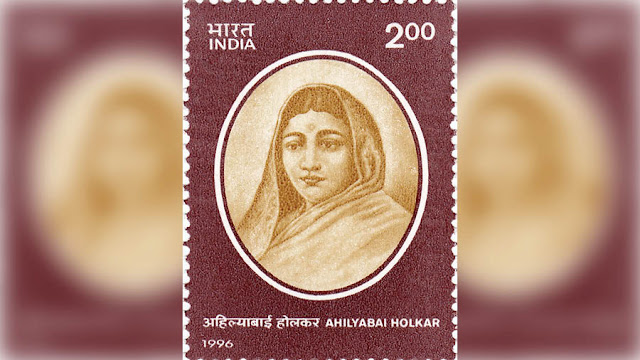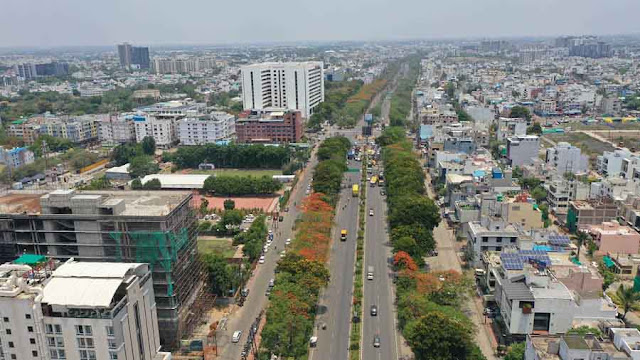Clean bowled by Indore
Sundeep Bhutoria leads you through the roads and into the soul of Madhya Pradesh’s largest and India’s cleanest city
 |
Indore, Madhya Pradesh – as clean as a big city gets in India
As someone who’s always on the move, my life moments are all about new experiences and newer discoveries. Let me now lead you through the roads and into the soul of a city that I just experienced – Indore.
Madhya Pradesh’s largest and most populous city has been ranked as the nation’s cleanest city repeatedly, 2022 being the latest. Situated 190km west of the state capital of Bhopal and about 57km from Ujjain, Indore is an ancient city. A copper plate dating back to 465 CE, which refers to the city as Indrapura, has been discovered there.
I was in Indore last month, and I was met by quite a few pleasant surprises. A personal high point was my meeting with the former speaker of Lok Sabha, retired veteran politician Sumitra Mahajan. The meeting was especially rewarding as I realised with no doubt why the ‘Tai’ of her constituents had won eight consecutive elections in the Indore constituency in Madhya Pradesh.
 |
Sundeep Bhutoria in conversation with retired veteran politician Sumitra Mahajan
Indore is truly the cleanest city in India. The result of an effort by the authorities and different stakeholders and meticulous teamwork, Indore catapulted itself to the premier position from a lowly 149 position in 2015 within a mere 18 months. Challenge accepted, they formulated a plan of action and implemented it.
Here, in the middle of the night, you will invariably find streets vibrant with life and bedecked with colours of every hue, which combine with delightful aromas of various delicacies. One cannot miss the lively atmosphere and if you were to ask someone, the reply would be, “Why do we work? It’s all for the love of food.” Indeed, these are the people of Indore. Their mornings start with poha. At noon, they savour sev. And if you venture out in the evenings, you will find all this and more.
 |
Indore is truly the cleanest city in India. The result of an effort by the authorities and different stakeholders, and meticulous teamwork
The development of the city of Indore can be traced back to the days of Rao Raja Nandlal Mandaloi around the year 1716, a prominent landlord who had anticipated the rise of the Marathas and provided them substantial support as they swept in from the south. His efforts culminated in him submitting a petition to the then Mughal emperor seeking tax exemption for merchants and traders. This led to a substantial influx of traders who found it profitable to conduct business and make it their new home. Amongst a host of other names, traders from Siyaganj moved to Nandalalpura and as time passed, prominent markets such as Raojee Bazaar, Nihalganj, and Nihalmandi gained recognition as centres for trading in commodities such as cotton, wheat, and opium. In 1733, the Holkars gained full control over Malwa and declared Indore their capital.
Thereafter, in 1866, the first textile mill in Indore was founded by Tukoji Rao Holkar, but Malwa already had a long-standing reputation for producing high-quality white cotton and textured fabrics. The renowned and enigmatic Holkar Rani Ahilyabai also held weavers in high regard and courtesy of her patronage, the fabled Maheshwari saris remains an emblematic product of the region even in these modern times.
 |
The patronage of the renowned and enigmatic Holkar Rani Ahilyabai helped weavers and the fabled Maheshwari saris remain an emblematic product of the regionWikimedia Commons
|
Amongst the bustle of markets, you will always find hubs of irresistible food that continues deep into the night throughout the year. Every day as evening takes over, the shutters of the countless jewellery shops in Sarafa Bazar drop and then, after only a brief interval, the whole area springs to life as if the curtains have been lifted for a new act of a play. The area, the roads, every possible place comes alive courtesy of food stalls.
 |
Sarafa Bazar
Even a few decades ago, the scene here used to be quite different. In this marketplace, the lower floors of most houses were occupied by Agarwal traders, Marwaris and other business people, while the upper levels served as living quarters. The sons of these shopkeepers, after finishing the day’s work, would come together after their meals at home and just hang out with friends. Subsequently, some could be seen enjoying rabdi, while others sipped hot milk available from the few stalls there. Magahi Paan is something that all would enjoy and as the days passed, a ritual of carrying some khatta-meethagoodies for the wife back home became the practice. As times changed, the women joined them in the open-air environment of Sarafa Bazar. It was women who made the chaat and pakoda stalls so popular as well as the Sabudana Khichdi and Aloo Tikki, staple foods during fasting periods. Soon, local delicacies such as Dal Bafla, Malpua, Mawavati, Shrikhand, and Falooda Kulfi became integral to the scene.
 |
Poha and jalebis – some of Indore’s favourites
The culinary traditions of Malwa exhibit a strong Marathi influence, thanks to the history of the region. In 1733, as a token of his victory in the war fought between the Marathas and Jay Singh of Amber in Mandsaur, Bajirao I awarded the war general, Malhar Rao Holkar with the Indore Puraskar. The Holkar family’s magnificent royal residence, an impressive seven stories with influences of Maratha, Mughal, and French architecture, was known as the Rajwada, which in our times has been transformed into a central hub for commercial activity. Nestled between the crowded streets of the Kajuri Bazar, Rajwada continues to be a major tourist attraction.
 |
The Holkar family’s magnificent royal residence, known as the Rajwada
Today, many of these street food stalls have developed into permanent fixtures and on festive occasions, such as Ganesh Chaturthi and Anant Chaturdashi, finding a spot here can be quite a challenge. The unique Indori twist on the wide range of vegetarian dishes is not to be missed, such as enticing toppings for their offerings, while others showcase their unique culinary techniques.
From Joshi Dahibadawala’s impressive preparation of dahibadas to the alluring aromas emanating from Vijay Chaat Center, and the delectable confections at Agrawal Sweets – if you haven’t tried these, you haven’t fully embraced the essence of Indore. And without enjoying Akash and Prakash’s savoury snacks, no Indore experience can ever be complete. The Dahi Bada, Bhutte ki kees, Desi Chinese, Tokri Chaat, Indori Malai and Garadu with its special secret masala, if you seek to pamper your craving for street food, this is the city you must head to. Just remember that this is Indore, and there is simply no room for littering.
 |
Chappan Dukan has 56 shops serving authentic Indore snacks and sweets
This article was published in The Telegraph on 16.11.23 https://www.telegraphindia.com/my-kolkata/places/clean-bowled-by-indore/cid/1980468?utmsource=twitter&utmmedium=social&utmcampaign=mkdaily_tw

 October 1, 2024
October 1, 2024